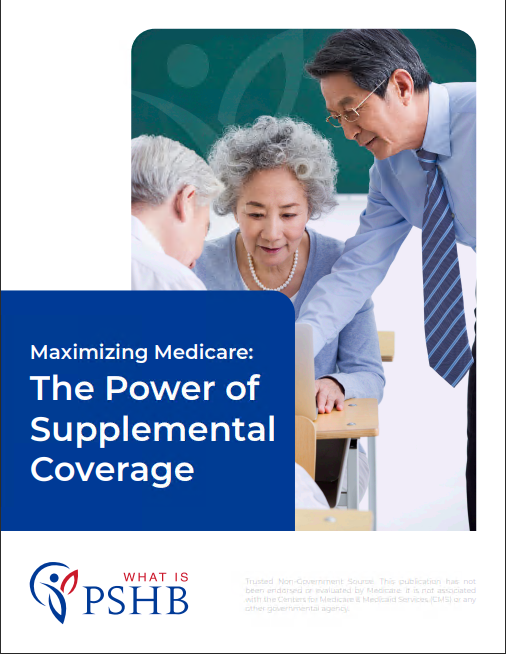Key Takeaways
-
Medicare Part A alone doesn’t offer the full protection you may expect when paired with PSHB. It has strict limits on coverage durations, coinsurance obligations, and out-of-pocket costs, especially for longer hospital stays.
-
You must understand how Medicare and PSHB coordinate benefits—particularly around who pays first, when, and for how much—so you don’t face surprise expenses or gaps in coverage.
What You Assume About Medicare Part A Could Be Costing You
When you become eligible for Medicare at age 65, you’re automatically enrolled in Medicare Part A if you qualify based on your work history. Because Part A generally comes with no premium for most Postal retirees, many assume it will function as a complete safety net alongside their Postal Service Health Benefits (PSHB) plan.
But the reality in 2025 is more nuanced. Medicare Part A covers hospital-related services, but it does so with limits. And unless you understand those limits—and how they interact with PSHB—you could be exposed to unexpected costs.
Understanding What Part A Actually Covers in 2025
Medicare Part A covers inpatient hospital care, skilled nursing facility care, some home health care, and hospice. That sounds broad, but each service has specific rules:
-
Hospital Stays:
-
$1,676 deductible per benefit period
-
Days 1–60: Fully covered after deductible
-
Days 61–90: $419 coinsurance per day
-
Days 91–150 (lifetime reserve days): $838 coinsurance per day
-
Beyond 150 days: No coverage
-
-
Skilled Nursing Facility:
-
First 20 days: Covered in full
-
Days 21–100: $209.50 per day
-
Beyond 100 days: No coverage
-
-
Hospice and Home Health: Limited to specific conditions and services; coverage depends on eligibility.
These figures reset with each benefit period, not calendar year—something many retirees overlook.
PSHB Isn’t Automatically a Safety Net Either
Your PSHB plan doesn’t automatically pick up where Part A leaves off. While most PSHB plans coordinate benefits with Medicare, what that means in practical terms varies. If you are not enrolled in Medicare Part B, for example, your PSHB plan may treat you as if you don’t have Medicare at all.
For hospital-related services, some PSHB plans may cover what Part A does not—but others may not cover everything without Part B. And most PSHB plans base cost-sharing on Medicare being the primary payer. If you only have Part A, you could find yourself responsible for:
-
Additional coinsurance beyond what Part A pays
-
Services denied by Medicare that aren’t fully picked up by PSHB
-
Deductibles and out-of-network charges, depending on the plan
You’re Automatically Enrolled in Part A—But That’s Only Step One
Most annuitants qualify for premium-free Part A through 40 quarters (10 years) of work. If you’re drawing Social Security, enrollment is automatic at age 65. But relying solely on that automatic enrollment can lead to false confidence.
To maintain full PSHB benefits in retirement, many enrollees are also required to enroll in Medicare Part B when they become eligible. This is especially true for Medicare-eligible annuitants and family members who:
-
Retired after January 1, 2025
-
Were not already enrolled in Medicare Part B before that date
Failing to enroll in Part B can trigger limited coordination with PSHB or even loss of prescription drug coverage under some plans.
Common Misconceptions That Lead to Coverage Gaps
Let’s clear up several persistent misunderstandings you may still believe:
-
“I have Medicare Part A, so I’m covered.”
Part A alone doesn’t cover outpatient care, durable medical equipment, or physician services—critical services that arise during most hospital stays.
-
“My PSHB plan will cover whatever Medicare doesn’t.”
Not necessarily. Without Medicare Part B, your PSHB plan may act as if you have no Medicare and apply deductibles and coinsurance accordingly.
-
“Medicare will always be my primary payer.”
That depends. If you’re retired and over 65, Medicare generally pays first. If you’re still actively employed by USPS, PSHB remains primary. Transition periods must be monitored closely.
The Prescription Drug Trap: EGWP Integration with Part A Alone Isn’t Enough
One of the major shifts under PSHB is the automatic inclusion of Medicare Part D prescription drug coverage via an Employer Group Waiver Plan (EGWP) when you’re Medicare-eligible. But here’s the catch: you must be enrolled in both Medicare Part A and Part B to keep this benefit.
If you decline Part B, even if you keep Part A, you risk losing:
-
Your Part D EGWP drug coverage under PSHB
-
Access to Medicare-enhanced drug benefits like a $2,000 annual out-of-pocket cap
-
Favorable cost-sharing in your PSHB plan, which assumes full Medicare enrollment
This isn’t a trivial oversight—it can significantly increase your costs and limit your access to prescriptions.
Financial Pitfalls of Relying Solely on Part A
In 2025, healthcare costs are rising. If you rely solely on Medicare Part A with PSHB, here’s where you could encounter higher expenses:
-
Hospitalizations exceeding 60 days — Coinsurance begins and grows steeply
-
Extended skilled nursing facility care — After 20 days, you pay $209.50/day unless PSHB steps in, which may not happen without Part B
-
Readmissions or multiple benefit periods — You may have to pay the $1,676 deductible more than once in a year
-
Lack of outpatient coverage — Labs, imaging, ER visits without admission, and physician follow-ups aren’t covered under Part A
You may think these are rare scenarios, but aging increases your odds of needing extended or repeat care. Without Part B, your financial risk goes up.
Why Full Medicare Enrollment Strengthens Your PSHB Coverage
The PSHB program was built assuming that Medicare-eligible enrollees would sign up for both Part A and Part B. When that happens, your PSHB plan typically offers:
-
Lower cost-sharing (e.g., waived deductibles, lower copayments)
-
Expanded provider networks through Medicare’s nationwide access
-
Drug savings through integrated Medicare Part D EGWP
-
Reduced billing disputes between providers and insurers
In fact, some PSHB plans only offer these enhanced benefits to those with both Part A and Part B. Relying on Part A alone means you miss out on the coordination that protects you from major bills.
What to Do If You’re Nearing Medicare Eligibility
Whether you’re about to turn 65 or supporting a Medicare-eligible family member under your PSHB plan, now is the time to:
-
Review your PSHB plan’s Medicare coordination rules. Not all plans coordinate the same way.
-
Confirm your Medicare enrollment status. Check if you’re enrolled in both Part A and Part B.
-
Compare cost-sharing outcomes. What are your deductibles and copayments with just Part A vs. with full Medicare?
-
Avoid late enrollment penalties. If you miss your Part B enrollment window, you could face lifetime surcharges.
-
Consider talking to a licensed agent listed on this website. They can walk you through how your current or future plan works with Medicare.
When Timing Matters Most
Medicare enrollment is based on strict timelines. You generally have a 7-month Initial Enrollment Period surrounding your 65th birthday:
-
3 months before the month you turn 65
-
The month you turn 65
-
3 months after
If you miss this window, you may have to wait until the General Enrollment Period (January 1 to March 31), with coverage starting in July and late penalties applying.
For PSHB enrollees, this delay could mean months without proper coordination and even loss of drug coverage under EGWP.
Medicare Part A: Helpful, But Not a Complete Safety Net
Having Medicare Part A is a good start—but in the PSHB context, it’s not enough to protect you from coverage gaps, hospital costs, or prescription drug surprises. The system in 2025 is designed for integrated coverage, not piecemeal enrollment. That’s why you need to look beyond just Part A.
Make sure you’ve taken the right steps to align Medicare with your PSHB plan. If you’re unsure, speak with a licensed agent listed on this website who understands the specific coordination rules in place for postal workers and retirees. Your coverage—and your financial peace of mind—depend on getting this right.










